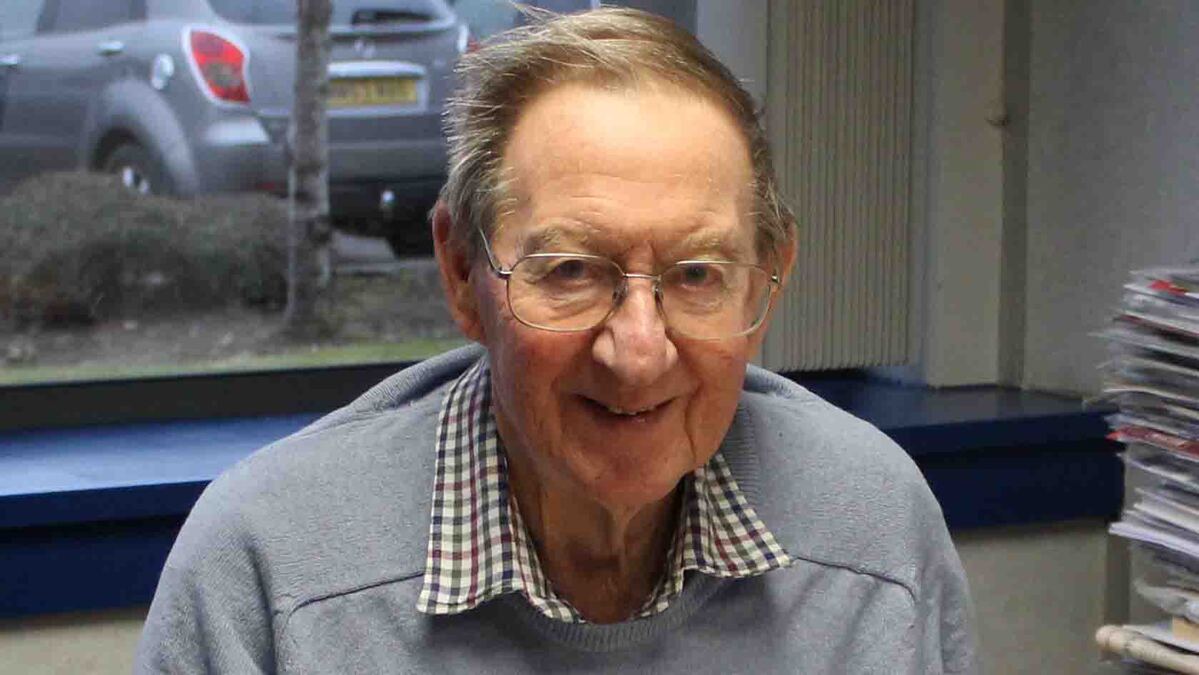Published:

Professor Emeritus Desmond 'Des' Smith (OBE FRS, FRSE, F.Inst.P), Honorary Graduate and former member of Heriot-Watt Staff, has made leading contributions to the physics and technology of optics and photonics.
In 1970, at the invitation of Vice-Chancellor Robert Smith, Professor Des Smith left the University of Reading for the Chair of Physics at Heriot-Watt University - where he created the University's first research-driven physics department from a green field. Throughout his time at Heriot-Watt, both as Head of the Department of Physics (1970-1996) and Dean of Science (1981-1984), Professor Smith has made a major impact internationally, nationally and across the University.
He has contributed to advances in optical coatings, magneto-optics of semiconductors, satellite meteorology, infrared spectroscopy and fluorescence technology and their applications. His work has led to highlights of which a few examples have included the tuneable spin-flip Raman laser, which gives the highest resolution molecular gas spectra, and (with J T Houghton) the invention of the carbon dioxide Selective Chopper Radiometer, which flew on the Nimbus 4 satellite in 1970. Derivatives on NASA planetary probes followed, including special band pass interference filters.
Under his leadership, Heriot-Watt Physics achieved international recognition as one of the top departments for the science of optics and its applications. A focus of his work was optical bistability, optical nonlinearity and photonic logic, sometimes called "optical computing", for which he was a leading pioneer. Not afraid to push boundaries, Des set up collaborations across Europe to study the underlying physics, and attracted research grants that enabled a generation of young scientists to be trained in an area embracing fundamental physics and an inspiring aim.
Heriot-Watt's Edinburgh Campus included Britain's first University “Research Park” where Professor Smith founded the first spin-off, Edinburgh Instruments Ltd (EI) in 1971. EI has since become one of the world's established manufacturers of leading-edge spectroscopic instrumentation and gas detection solutions. Now based outside Edinburgh in Livingston, EI still employs several Heriot-Watt graduates today, including their CEO Roger Fenske. More than 1,000 lasers, 2,500 fluorescence grating spectrometers and 92,000 near infrared gas sensors for CO2 and other gases, have been manufactured and exported.
Recalling this time, Professor Smith said: “Heriot-Watt pioneered spin-outs in the 1970s and that spirit is still there. Turning academic research into commercial products drives our economy and advances research internationally. Spin-outs create jobs, drive science and markets forwards and can change everyday life. We need to support them in a flexible way, so that they can survive and flourish."
In 2011, Professor Smith was presented with a prestigious Royal Society of Edinburgh Royal Medal by the Duke of Edinburgh in recognition of his eminent work in physics research, especially in optoelectronics, spectroscopy and laser technology and its application in industry and research technology. Success continued in 2013 when he founded his second company Edinburgh Biosciences Ltd, again on the Research Park, notably in the treatment of cataracts.
Working with scientists at Heriot-Watt University, and experts worldwide, this world leading technology is now at the early human clinical trials stage - at the cutting edge of assisting cataract lens eye surgery, which replaces rather than treats, by providing treatment with an LED. Diagnosis using fluorescence is currently also under development.
Professor Smith explains: “I was diagnosed with cataracts years ago and my surgeon, Professor Bal Dhillon of The Princess Alexandra Eye Pavilion and the University of Edinburgh, advised that I should have them surgically removed. A very busy man, Bal had been doing some research at Heriot-Watt University and he saw me as a colleague as well as a patient. This caused the start of fluorescence research and we made successful bids for NHS, MRC, European and Innovate UK funds.
“This has resulted in the development of a completely novel therapeutic approach to the treatment of cataracts based on the use of light rather than surgery or drugs. Our very sensitive monitoring technology allows us to detect changes in lens capacity or cataract severity, and quickly apply our treatment. This could revolutionise the way cataracts is treated across the world, and it will be possible to provide treatment at a much earlier stage in cataract development, avoiding or delaying the need for surgery.”
The vital work of Edinburgh Biosciences is closely linked with Heriot-Watt's world-class research in the School of Engineering and Physical Sciences and its global research in Medical Technology, driving the next generation of medical devices and diagnostics to address unfulfilled clinical and industrial needs. By combining Heriot-Watt's world-leading expertise in physical science and engineering with the application of innovative technology, to focus on a common problem, has enabled multiple industry partnerships and successful spin-outs, producing more impactful research, such as Edinburgh Biosciences.
Now into his 90s, Professor Smith shows no sign of letting up and his drive to push the boundaries in research, invention and innovation continues to have a positive impact on the world today.